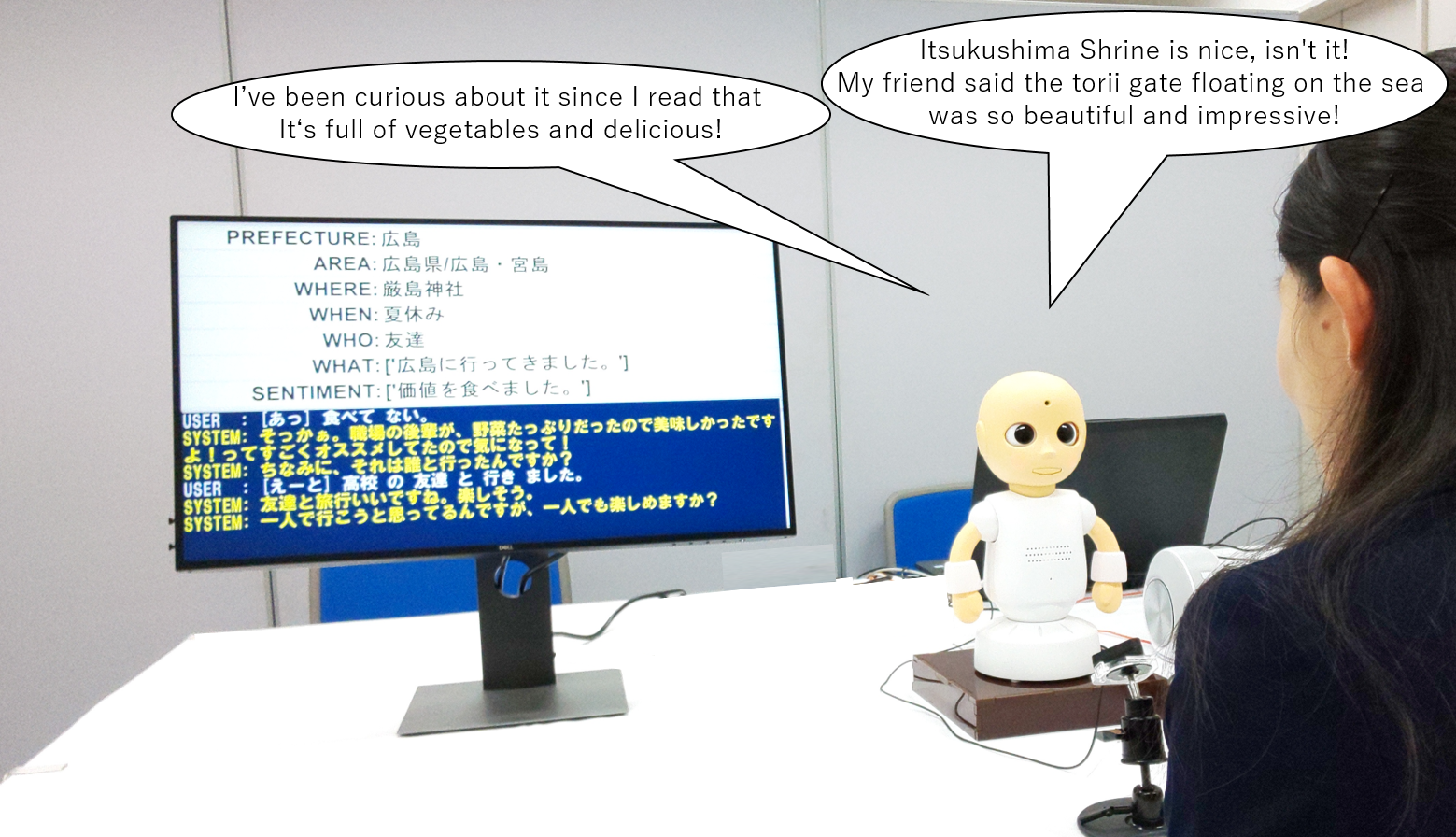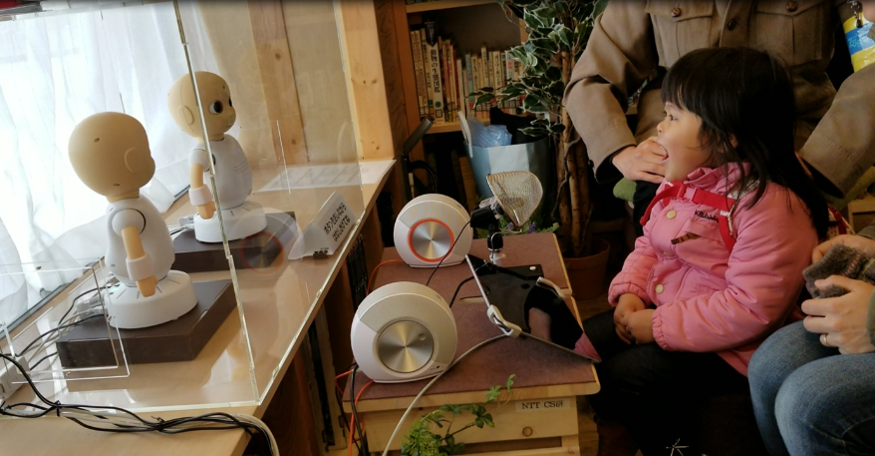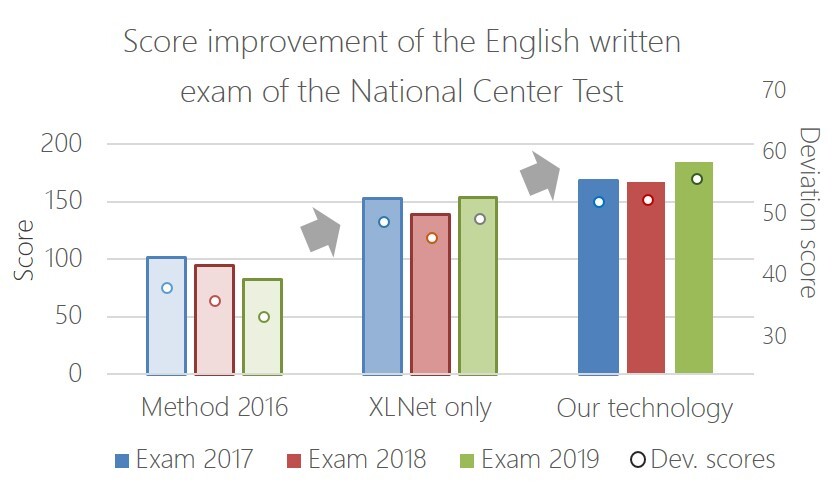Chat Dialogue Technology
Building the personalities of dialogue agents
When we interact with people, we unconsciously sense the personality of their conversation partner from the content of dialogues. People try to sense personalities in the same way even when their conversation partner is an agent (chatbots or CG avatars), so dialogue agents must have their own personalities and speak accordingly. We develop technologies to build agent's personalities that consist of their own experience, knowledge, judgment criteria, tone and gestures.

Flexible dialogue control with multiple agents
We do not always have engage in dialogue with one person at a time. We often have conversations with two or more persons at once. Even more, when we talk with first-met persons, we can engage in multi-party conversatons more easily than one-to-one conversation. In fact, it is known that even in dialogues with agents, by staging dialogue between three parties (two agents and one human), one agent can interject when the other agent is speaking, or multiple agents can expand on topics of conversation amongst themselves to make conversation more lively. We are doing research on coordinating multiple agents with the aim of realizing a society in which many people and agents can coexist.

Realizing dialogue suited to the attributes of conversation partners and the relationships between speakers
We interact with people by changing the way we speak appropriately according to their attributes (age, gender, etc.) and and our relationships with them (first encounter, friend, family, boss, etc.), so agents must also take these factors into consideration when interacting with people. For example, if the agent's conversation partner is a small child, it cannot easily convey what it wants to say if it speaks to them in the same way that it would when speaking to an adult. Also, if an agent has interacted with someone many times but continues to interact in the same manner as it did the first time, people will find it difficult to get familiar with the agent. In order to deal with these challenges, we are working to develop technology that adjusts the topics and tone of speech, as well as the gestures that agents use according to the attributes of their conversation partner and their relationship with them.
- The 23rd workshop on the Semantics and Pragmatics of Dialogue (SemDial2019):Analysis of satisfaction and topics in repeated conversation through days
- Hideharu Nakajima, Yushi Aono, Collection and Analyses of Exemplary Speech Data to Establish Easy-to-Understand Speech Synthesis for Japanese Elderly Adults, Conference of the Oriental COCOSDA International Committee for the Co-ordination and Standardisation of Speech Databases and Assessment Techniques (O-COCOSDA), 2020.
Realize value judgments based on knowledge and common sense
When speaking with others, we unwittingly use implicit knowledge that we assume the other party would know. For example if two friends are walking down the street, and one sees that other's shoelaces are untied, they might say "Your shoelaces are untied." Saying this implies "It will be hard to walk with your shoelaces untied, so you should retie them." The friend with their shoelaces untied will understand what their friend meant and say "Thank you," then retie their shoelaces.
This kind of dialogue based on casual knowledge like "It will be hard to walk with your shoelaces untied, so you should retie them," occurs frequently in daily conversations between people, so dialogue agents that aim to build relationships equivalent to those that humans have with each other must also acquire and utilize such knowledge. In our work on the English section for the NII Project "Can a Robot Get into the University of Tokyo?", we confirmed that it is possble to improve the performance of the robot when answering questions that include common sense or knowledge by using machine reading technology, which allows machines to learn the characteristics of long sentences. In addition to develop machines that acquire knowledge and common sense on their own, we are also working to develop technology that engages in dialogue while guessing what knowledge their conversation partner has.
